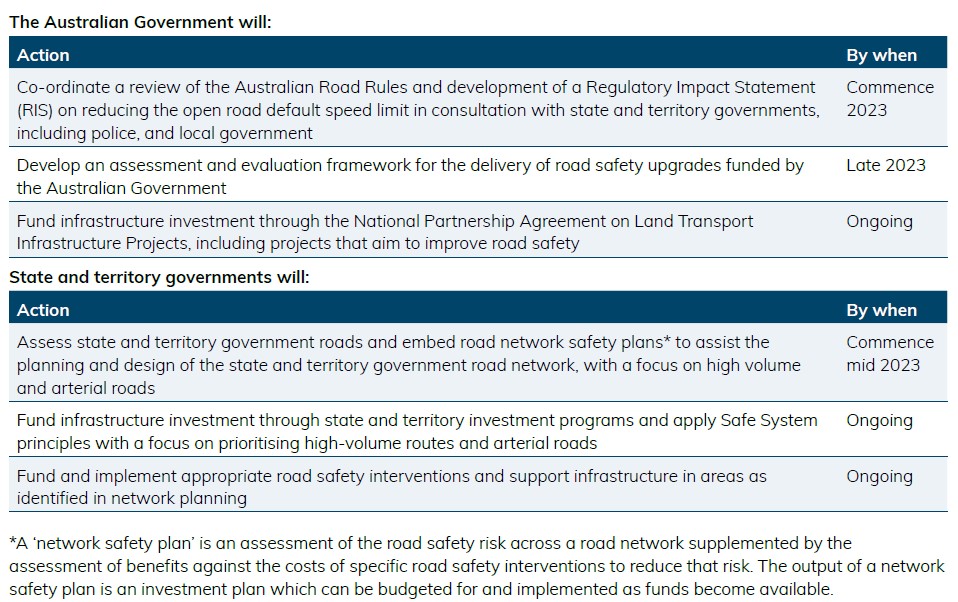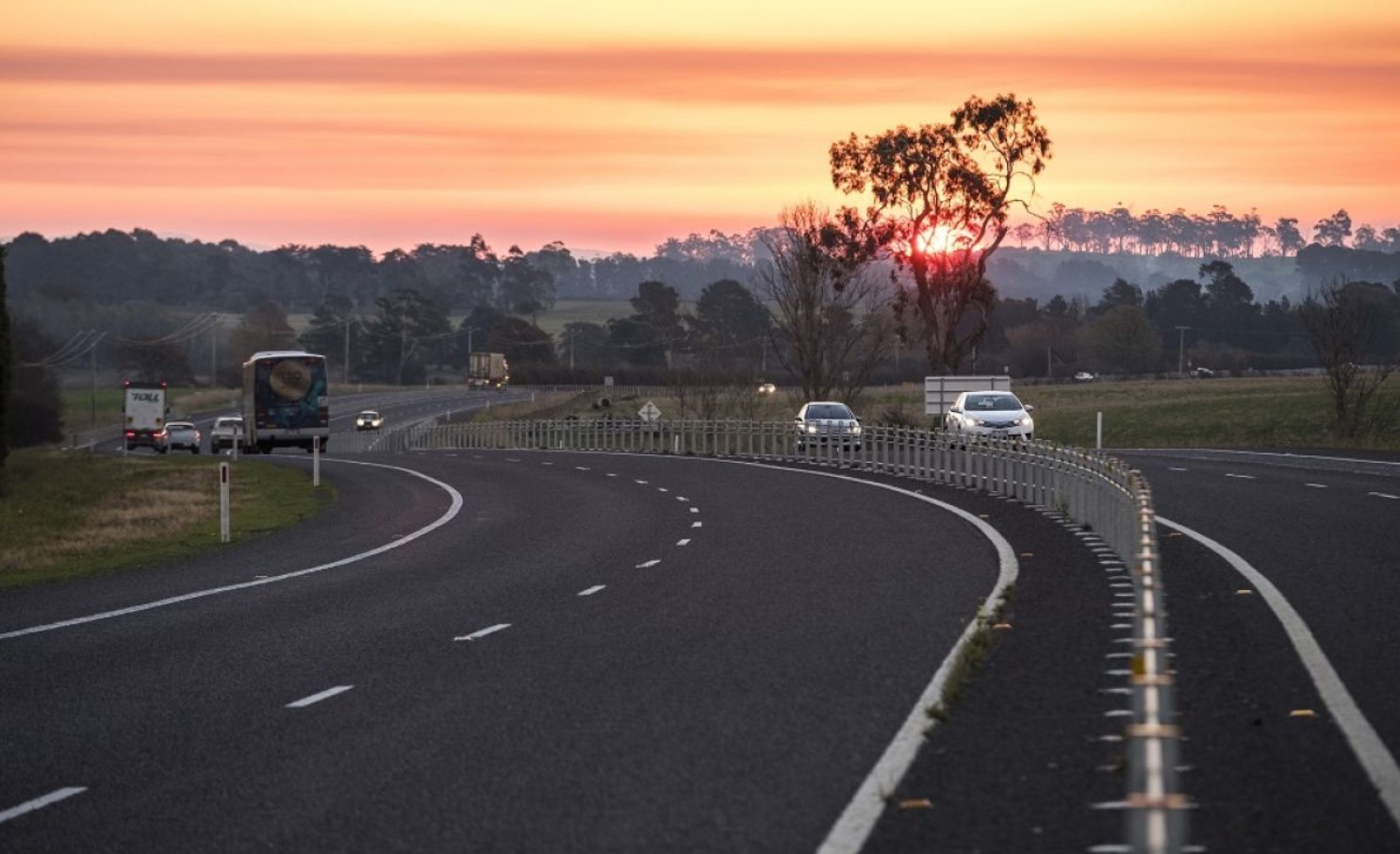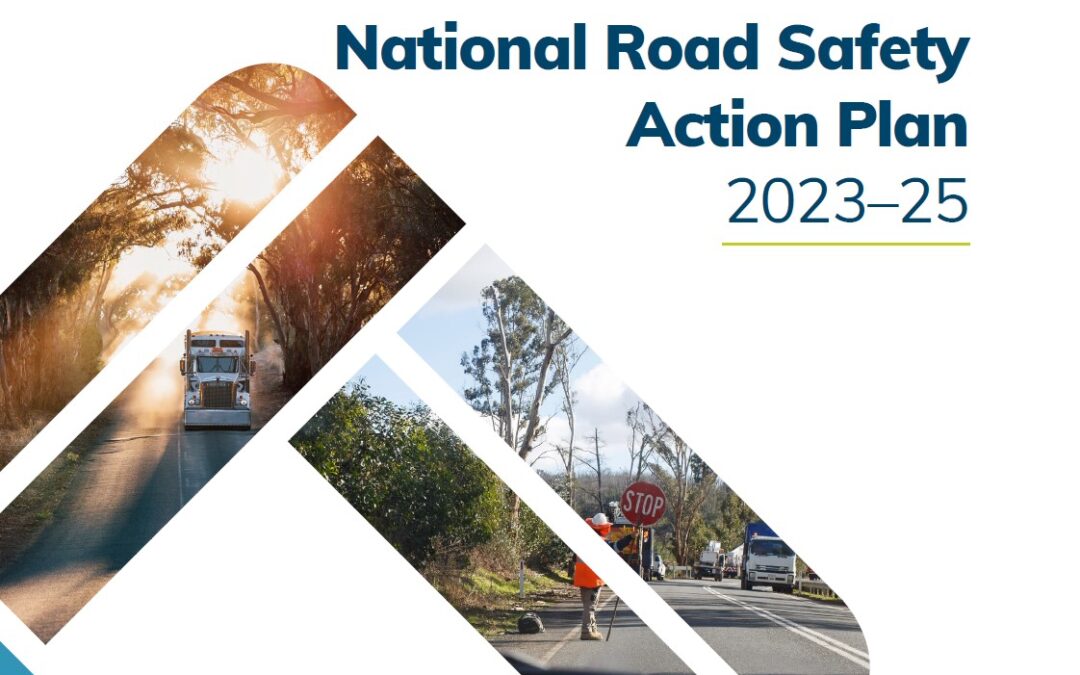The Plan sets a safety key performance indicator (KPI) to increase the share of travel on all national highways and on the high-speed network (≥ 80 km/h) to achieve 80 per cent of travel recognised as 3-stars (or equivalent risk rating) or better.
The KPI will measure the success of infrastructure planning and investment, regional and remote road safety, heavy vehicle and workplace road safety and vulnerable road user safety.
In terms of infrastructure planning and investment, the Plan includes the following commitments:

Case Study: Tasmania’s Midland Highway
In the southern state of Tasmania, under the Midland Highway 10 Year Action Plan, the Australian and Tasmanian governments are investing over AUD$550 million in safety upgrades to save lives on Tasmania’s key north-south highway.
The Midland Highway Action Plan is underpinned by the Safe System approach, recognising the road infrastructure must be designed to reduce both the likelihood of crashes occurring and the severity of crashes if they do occur.
The objective of the 10-year investment is to deliver a minimum 3-star rating over the entire length of the highway. To achieve this, a number of road treatments are being applied such as flexible barriers, widened shoulders, the removal of roadside hazards, upgrading intersections, realigning tight curves, and providing additional overtaking lanes and rest areas.
The final works are expected to be completed during the 2024/25 summer.

Tasmania’s Midland Highway (Image source: Tasmanian Government)
Whilst the Action Plan recognises “the critical need to improve national road safety data, and strengthen the evidence base for decisions on the most efficient and effective ways to deliver better road safety outcomes’’, Australia’s peak motoring body the Australian Automobile Association (AAA) says it does not go far enough.
In a media statement released earlier this month, the AAA says the Plan fails to deliver transparency reforms previously and repeatedly recommended by independent inquiries, government reviews, and expert advice.
According the the AAA, “One of the greatest roadblocks to improving road safety in this country is the non-publication of critical road safety data that could allow Australians to judge whether state and federal governments are investing in the right projects to improve road safety. Australians know that road deaths are continuing to rise. But we have no information about rates of serious injury, the exact location of our most-dangerous black spots or the safety rating of the road. States and territories have this information, but it is not made public.”
AAA Managing Director, Michael Bradley said “Motorists and taxpayers have a right to full transparency of road safety data so they can be assured that governments are investing scarce public money where it is most needed to deliver safety outcomes. The new Federal Government has a golden opportunity to reset the dial on road safety by making its road funding grants to states contingent on transparency of road safety data. But this report is silent on the issue of evidence-based road funding.”
New data shows national road deaths increased 7.3% in the 12 months to 31 January 2023 and the AAA has called for a more urgent response from government.
iRAP CEO Rob McInerney was one of three key advisors on Australia’s independent National Road Safety Inquiry in 2018 that included 12 recommendations to transform the country’s road crash burden and save lives.
Working together, iRAP is continuing to support AusRAP partners to develop a national RAP strategy, and provide the free tools, training and support for collaborative innovation to eliminate high-risk roads in the country.
About AusRAP
The AusRAP programme, led by Austroads, has assessed 424,861 km of roads and designs, influencing the safety of US$15.9 billion of road infrastructure investment including a national $3 billion Safer Roads Programme which includes targets for 3-star or better performance.
Star Rating policy targets are in place in 14 national and state policy documents including the 2021-2030 Australian National Road Safety Strategy, 2023-2025 National Road Safety Action Plan, South Australian Road Safety Strategy to 2031, New South Wales Road Safety Plan, Victorian Road Safety Plan 2021-2023 and 2021 Australian Government Remote Roads Upgrade Pilot Programme Guidelines helping to inform the safety of billions of dollars of road upgrade investment. See the policies here.
AusRAP partners are leading Artifical Intelligence based road safety assessments (AiRAP) and ARRB is one of 11 iRAP Centres of Excellence world-wide helping to shape the evidence-based global road infrastructure safety standard and tools.
In Australia, 3,123 people have received training in the iRAP Methodology in events delivered locally and 511 people have benefited from iRAP global/on-line training.


















